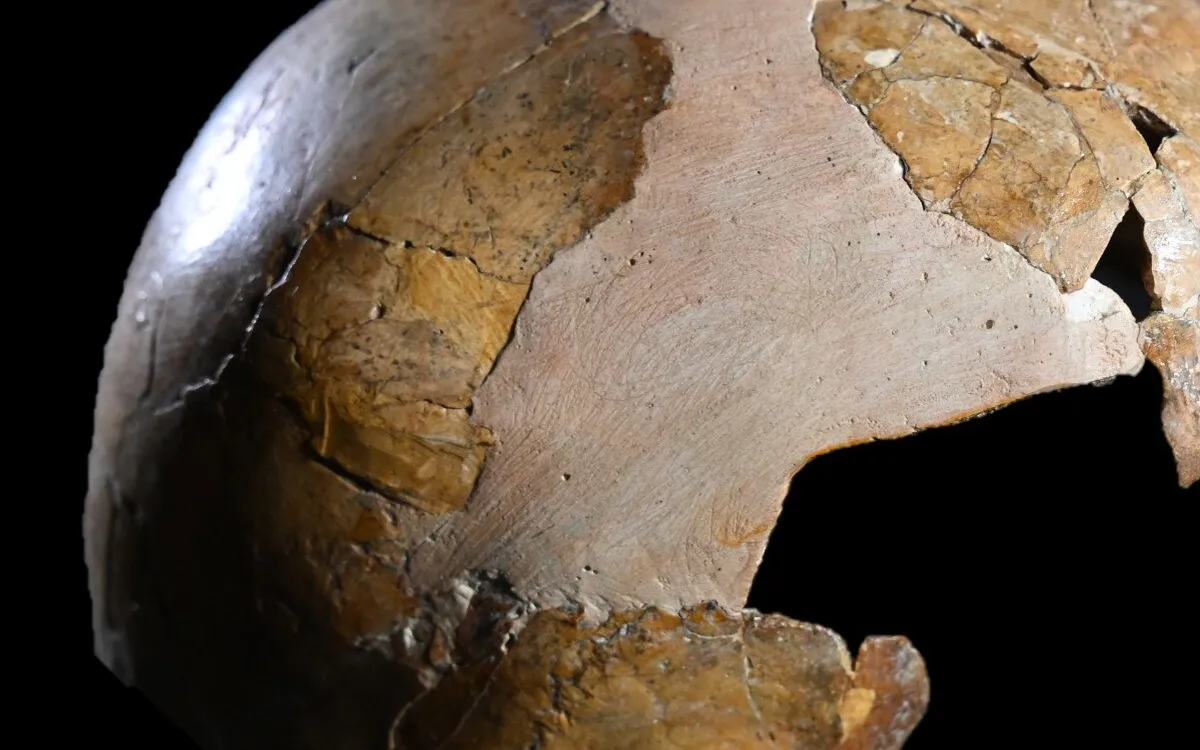
An international research team, led by Tel Aviv University and the French National Center for Scientific Research, has uncovered groundbreaking evidence that Neanderthals and Homo sapiens engaged in both biological and social relationships, including interbreeding, in the Land of Israel. This significant study highlights the discovery of a five-year-old child's skeleton, found approximately 90 years ago in the Skhul Cave on Mount Carmel.
Estimated to be around 140,000 years old, this fossil is the earliest known human specimen to exhibit morphological characteristics from both Neanderthals and Homo sapiens. Until recently, these two groups were believed to be entirely distinct species. The research, spearheaded by Prof. Israel Hershkovitz from the Gray Faculty of Medical and Health Sciences at Tel Aviv University and Anne Dambricourt-Malassé from the French National Center for Scientific Research, has been published in the journal L'Anthropologie.
Over the past decade, genetic studies have demonstrated that Neanderthals and Homo sapiens exchanged genes. Prof. Hershkovitz explains that even today, 40,000 years after the last Neanderthals vanished, our genome retains approximately 2% to 6% of Neanderthal DNA. However, these genetic exchanges occurred much later, between 60,000 and 40,000 years ago. The study presents a fossil that predates these exchanges by 140,000 years, providing new insights into the interactions between these two human species.
The child's skull displays a shape reminiscent of Homo sapiens, particularly in the curvature of the skull vault. Notably, it also features an intracranial blood supply system, a lower jaw, and an inner ear structure typical of Neanderthals. This combination of traits supports the hypothesis that these two human groups coexisted and interbred.
Historically, Neanderthals were believed to have evolved in Europe and migrated to the Land of Israel around 70,000 years ago due to advancing glaciers. However, in a 2021 study published in Science, Prof. Hershkovitz and his colleagues provided evidence that early Neanderthals inhabited the Land of Israel as far back as 400,000 years ago. This earlier human group, referred to as Nesher Ramla Homo, encountered Homo sapiens groups who began migrating out of Africa roughly 200,000 years ago, leading to further interbreeding.
The child from the Skhul Cave represents the earliest fossil evidence of the social and biological connections formed between Neanderthal and Homo sapiens populations over thousands of years. Eventually, local Neanderthals integrated with the Homo sapiens population, akin to the fate of later European Neanderthals.
The researchers employed cutting-edge techniques to analyze the fossil. They used micro-CT technology at the Shmunis Family Anthropology Institute at Tel Aviv University to scan the skull and jaw, creating an accurate 3D model. This allowed for a detailed morphological analysis of anatomical structures, including hidden elements such as the inner ear. They also reconstructed the brain's blood vessel structure, contributing to the understanding of this unique fossil.
Prof. Hershkovitz notes that this fossil marks the earliest known physical evidence of mating between Neanderthals and Homo sapiens. While a child skeleton discovered in Portugal in 1998, known as the Lapedo Valley Child, also exhibited traits from both groups, it is over 100,000 years younger than the Skhul child.
Traditionally, anthropologists have classified the fossils discovered in the Skhul Cave and Qafzeh Cave near Nazareth as belonging to an early group of Homo sapiens. The current study challenges this notion, revealing that some fossils from the Skhul Cave resulted from ongoing genetic exchange with the local—and older—Neanderthal population.